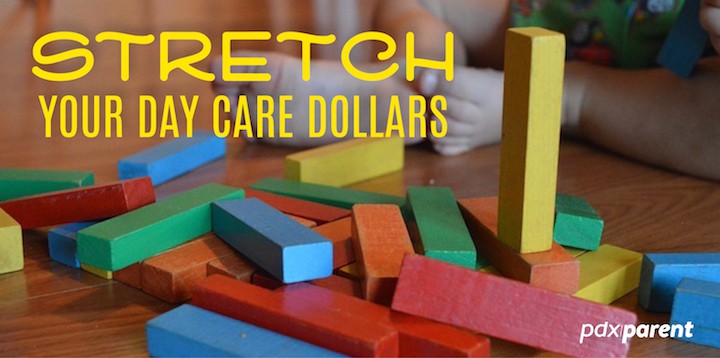Practical tips to help keep child care expenses down.
Let’s face it, the cost of childcare today can bring on the sticker shock in no time flat — we’ve joked about it being akin to a second mortgage, but that’s not far from the truth. We know how daunting it can feel, so we’ve laid out some of the pros and cons of the options out there.
Child care centers This may be the most prevalent option around. By pooling resources with other parents, you are able to provide a high level of care and early exposure to other kids to boot. Keep in mind that you need to begin touring and signing up when you are considering getting pregnant if you want to guarantee a spot at a particular place. Child care centers will run you about $700 to $1600 per child, per month depending on the age and the number of hours your child attends.
Nanny Having a nanny is the ultimate in child care options. This allows you to have your children cared for in your own home, and may include perks such as laundry or light cleaning duties. This is also the most expensive option, starting at around $17 an hour, plus negotiated benefits. If you have only one child, a full-time nanny may be cost prohibitive.
Nanny share A nanny share offers many of the benefits of the personalized care of a nanny, while sharing the cost with another family — it’s a very popular option in Portland’s sharing economy. Remember that for both nanny options you need to get an EIN number, produce a W-2, and pay for social security and other related taxes. We found our nanny through care.com, which also has great resources for contract templates.
Family care If you are fortunate enough to have family available nearby that works well for full-time care, you are among the lucky few. Even having solid grandparent care for a specific period of time can save you a bundle and make life oh-so-much easier. If one parent has the flexibility to work from home or cover some of the child care time, this also saves significantly.
Child care cost controls With many aspects of childcare pretty fixed, these options can feel like a fire sale.
- Make use of tax advantages. If both spouses work, you can either put away pre-tax money (up to $5K) through an employer sponsored flexible spending account (FSA) or take the child care credit based on expenses and income.
- We’ve found that paying attention to hours can save you a great deal. For example, choose a child care provider close to your workplace to only need 40 hours a week, instead of adding on commute time. Likewise, if you can coordinate with your spouse to cover different hours with your child, and thus reduce the overtime you need of care, this makes a significant difference.
Budgets after babies Reconfiguring your budget as the cost of child care changes is also essential. The good news is that child care costs will go down as kids grow up, reducing the cost as they move from infants to pre-K, although costs for activities and summer camps start to kick in. We recommend taking the initial budget that you put towards child care and starting to put this into a 529 education savings plan as your child care costs decrease. You won’t really miss it, since you’ve already been forced to adjust this into your budget.
- Stretch Your Day Care Dollars - March 29, 2019






